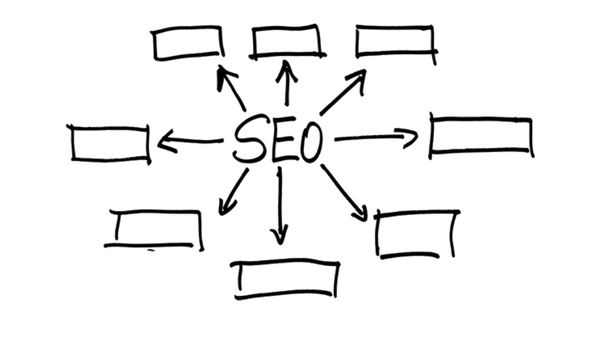10 e-Commerce Business Branding Tips
When you plan to build something complex like an e-commerce company, branding plays a crucial role in your success. Often customers buy a product depending on what a brand represents. People like to be connected through emotions and branding is something that encourages them to buy your product/service.
1. Effective logo design
Creating a truly effective logo is immensely important when it comes to branding of your company. An appealing image is something that people will remember for long and it simply cant't be achieved with a bunch of text.
Your logo is the public face of your business with which people can identify your company by having just a glimpse of it. An effective logo can set your business apart from the crowd and can be remembered by consumers. For instance, consider McDonalds's logo that appears with golden arches or Nike's logo that has become synonymous with athleticism and everything sporty. Simply put, your logo doesn't have to be complicated; instead, it needs to be something memorable and recognisable instantaneously.
2. Refine your brand language
Refinement of your brand language means you need to select a strong strap line or tag line and some keywords that are closely aligned with the mission and vision statement of your company. These will help people to memorise and recognise your brand instantly the second time they see them. Here are two tips that you can use to refine your brand language. Keep your strap line aligned as close as possible to your mission statement while sticking to the basics. All copy related to your brand, including your product's labels, your advertising materials and what you have on your website should project the same thing that you're trying to do with your strap line.
3. Enhance the perceived value
When you're selling something online, consumers can't check your product physically, which means they would consider your products only as good as they look in the pictures. This is called the perceived value of a brand. By increasing the perceived value of your brand, you would be able to attract more customers who would agree to pay for it. Here are some ways to enhance the perceived value of your brand:
- Invest in high resolution product photography.
- Consider increasing the quantity of user-generated content such as honest product reviews together with customer pictures.
- Consider developing your product descriptions to be as much engaging as you can.
4. Emotional shopping experience
In order to build and sustain as a successful e-commerce brand, you have to ensure that your consumers can emotionally connect with your brand. For this, you need to identify the major emotions that evoke beneficial responses from the visitors who spend time on your site. Here are few key emotions that you can use.
- Desire: Create an enticing lifestyle image that associates with your brand and appeals to your target consumers. many Shopify themes have 'hero sliders' on the home page to hold this life style imagery.
- Intrigue: You can enhance consumer curiosity by developing a compelling recognition like eccentric logo, colours, typography etc and marketing messages.
- Trust: Provide your consumers with a top-level of comfort and trust through secure checkouts and security badges. This can also be developed by being honest and transparent through your product reviews, brand narratives, press mentions, customer stories etc.
- Fear: Develop your CTAs in such a manner that they can generate fear of missing out or FOMO.
5. Know your customer
In order to stay successful in the long run, you need to identify your target customers. This means you need to focus equally on both product centricity and customer centricity. Often, e-commerce business owners forget to focus on their customers while concentrating entirely on their products or catalogs. If you've been making the same mistake till now, it can be rectified by meticulously going through the analytics and the buying patterns of your customers. Personalised customer experience is another crucial thing that helps you get going. Consider providing your customer with a detailed and seamless shopping experience right from browsing till ordering and right through delivery with customised packaging.
6. Know your competitors
Knowing your competitors is simply a great way to upkeep the branding of your business. That being said, you need to know your mission, what are the things that you need to modify etc. Simply put, you've to have something that drives you to alter all your branding decision for good. Knowing your competitors would simply provide you with a clear idea of the way you want the brand to sound like, be like and perform. Apart from helping you identify your niche markets, it will also help you to identify the events in which you should take part and the ones you should give a miss. If your competitors are upgrading or refreshing their brand, maybe it's time you considered it too.
7. Maintain consistency
Consistency plays an extremely crucial role in the success of e-commerce businesses. You need to provide your consumers a consistent experience across every touch point. Apart from enhancing your brand recognition, it will help also help to increase the perceived value of your offerings in terms of quality, trust and commitment. Here are some areas upon which you need to focus to maintain consistency.
- Images: Maintain consistency in all your brand images in terms of backgrounds, lighting, editing, camera angles etc to develop a signature style.
- Copywriting: All your product descriptions should be consistent. Try to maintain the tone, length of your copy, use of words etc.
- Delivery experience: Consistent delivery experience means the delivered products should look exactly the same as they look on your website.
8. Online branding
In retail, for instance, a consumer can contact a store to understand the location and opening hours and then simply drive to the location, walk into the store and pick his/her preferable product. She is also able to return items and can communicate with the store via phone or post. All of these rolled into one thing is what we call customer experience. When it comes to online branding, you need to leverage social networking sites like Facebook, Twitter, Google+, Pinterest etc to attract the online savvy customers and position yourself as a leading name in the business domain you are in, by offering a seamless browsing, shopping and returns experience.
9. Multi-platform marketing
As an e-commerce business owner, it's immensely important to understand that your site is only the starting point of your sales as well as marketing efforts. You have to focus on different social media platforms to find success. Though as a start-up company, you may find it difficult to compete with the bigger and older ones, a core social media following would hugely help you to lower the gap in terms of customer numbers. When you have a solid number of social media followers that help publicise a positive experience with your brand, it will help you solidify your impact as a successful online store.
10. Take to influencer marketing
Emergence of social media has helped e-commerce businesses in a remarkable way. Now potential customers can seek buying advice from their family members and friends before buying from you. But this doesn't end here; they also look for any endorsement done by an industry authority for your product. When an industry authority mentions or endorses your product, the brand value of it becomes manifolds as people always tend to believe what a celebrity or expert in your niche talks about your product. Thus, it makes sense to link influencer marketing with other marketing strategies to obtain some serious traffic and to increase your brand value.
Example
In todays e-commerce scenario, Amazon is unquestionably the largest e-commerce store in the world. It may sound a little awkward thinking how an e-commerce store can sell everything but Amazon has proved it. Now, you can find anything you want on Amazon's website. There's a lot to learn from the story of this e-commerce leader. Founded as a bookselling company, Amazon gradually ascended to selling everything to the world. Customer-centric approach has always helped this company to maintain its brand image as an organisation. This approach provides top brand value while making it stand out of the crowd. Today, Amazon has become synonymous with customer-centric approach, product variety and competitive prices.
Conclusion
Perhaps you now have a fair idea about branding and how you can strategically enhance your brand value. It͛s important to note that each and every interaction you make with your customers and visitors gives you an opportunity to enhance your branding. Solidifying your brand pillars can greatly help you stand out as a consistent and highly recognisable brand. You should always remember the fundamental pillars of a brand strategy which are emphasis on quality, unique value proposition, personalisation, customer-centricity and the vision and mission of your business. Finally, branding isn't a onetime process or action; instead, it is ongoing and constant. Make sure that you review your branding strategy every six months to see whether it's portraying your brand's message to your target consumers just the way you intend to or not and in case it's not, make changes, where necessary.




